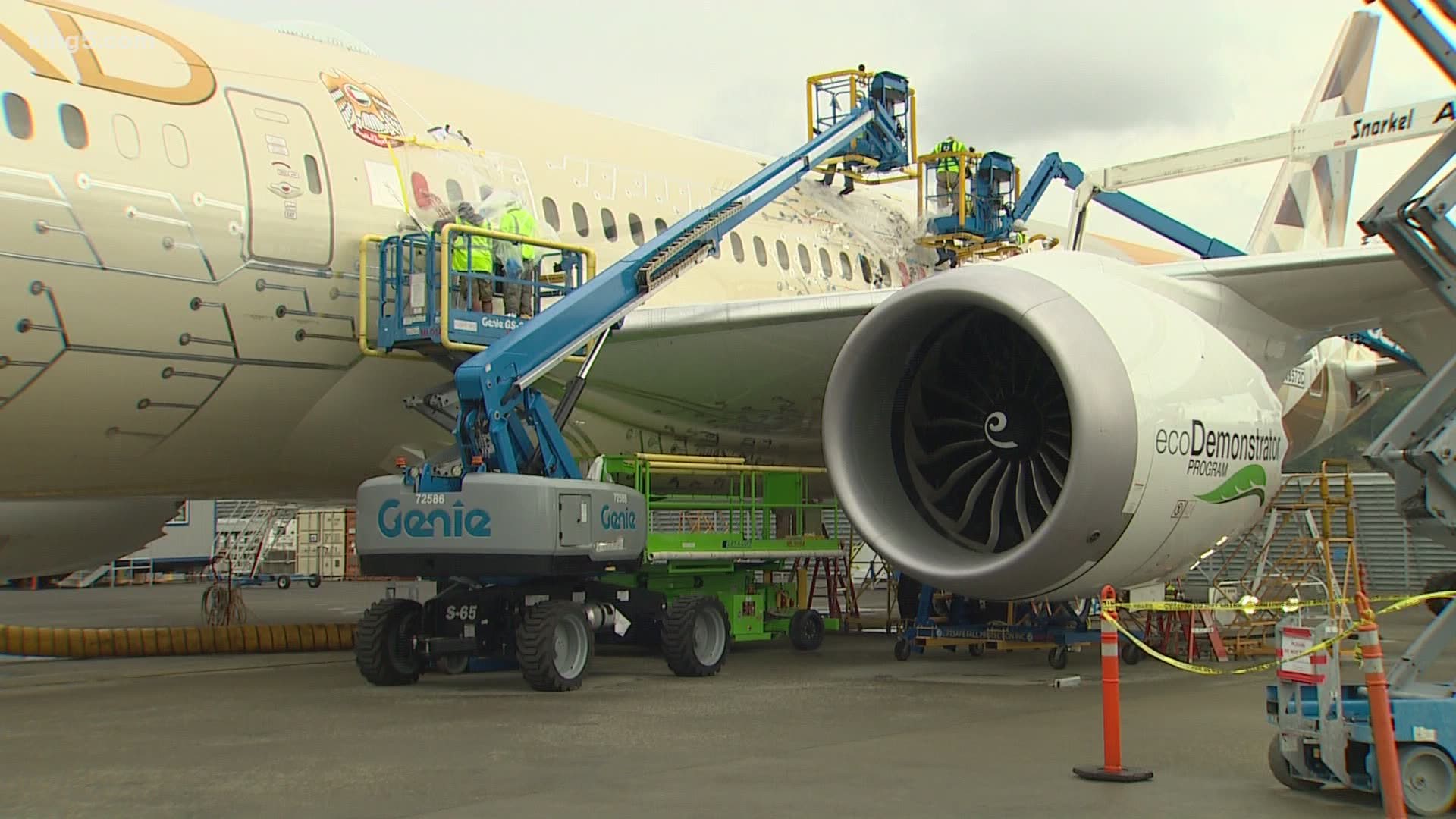RENTON, Wash — When we hear the noise of a jet landing at the airport, we just assume everything we are hearing comes from the engines, but that's not the case.
According to Boeing, 30% of the noise coming from a landing plane is actually generated by the wind interacting with the landing gear. Much like rolling a car window halfway down, it’s body noise that contributes to what you hear.
The landing gear, landing gear doors, extended flaps and the simple fact of moving a large object through the air no matter how streamlined the current state of the art may be, creates noise. That is the starting line for noise tests performed by Boeing under its ecoDemonstrator program for 2020.
For 12 years, Boeing has been hanging new experimental technologies onto different jets along with other subjects they want to study and gather data on.
The intent is to make flying better, safer, more fuel-efficient, more direct between cities and with less environmental impact than we have now.
The 2020 ecoDemonstrator program incorporates a suite of technologies aboard a 787-10 Dreamliner belonging to Abu Dhabi-based Etihad Airways. Boeing already considers this on of its quietest jets.
The plane itself is equipped with 214 small microphones speed taped to the fuselage and parts of the wings to record sound. For much of the past month, it has made some 88 approaches, overflights and other maneuvers over an array of 1,000 ground-based microphones at Boeing’s own private airport in northeast Montana outside the town of Glasgow.
The noise study is being carried out with the help of NASA.
“It is the most comprehensive data set of noise for commercial airplanes,” said Doug Christensen, Boeing’s Technical Fellow who oversees the technologies tried out on the ecoDemonstrator program.
Christensen said engineers are still poring over the results, but the results are targeted toward the future.
“And what that data will allow us to do is fine-tune our models, fine-tune our tools used to designed future airplanes," said Christensen
He said that most noise studies in the past have focused on listening to models in the highly controlled environment of wind tunnels. Doing that kind of work on an actual airplane under real conditions is a change.
“So when we design the next airplane, we will know where the noise sources are and how to make the plane in the most efficient manner and the quietest manner," Christensen said.
One of the technologies attached to the landing gear of the Etihad 787-10 are low noise fairings developed by Safran of France, which supplies engines and other components to the aerospace industry.
Other technologies being tried on the 787-10 include testing the durability of surface coatings and a large wand using ultraviolet light to kill the coronavirus in the cockpit, where the use of chemical disinfectants could damage electronics.
The plane is also testing new apps, which like a sophisticated GPS in your car can warn of traffic ahead and reroute you. There is airline traffic in the sky, including congestion around large airports, not to mention how to most efficiently get around severe weather.
The App makes is designed to present options to pilots to pick the most efficient and safest alternatives. The plane is also flown on a 50% mix of biofuel made from what the company describes as inedible agricultural waste.

